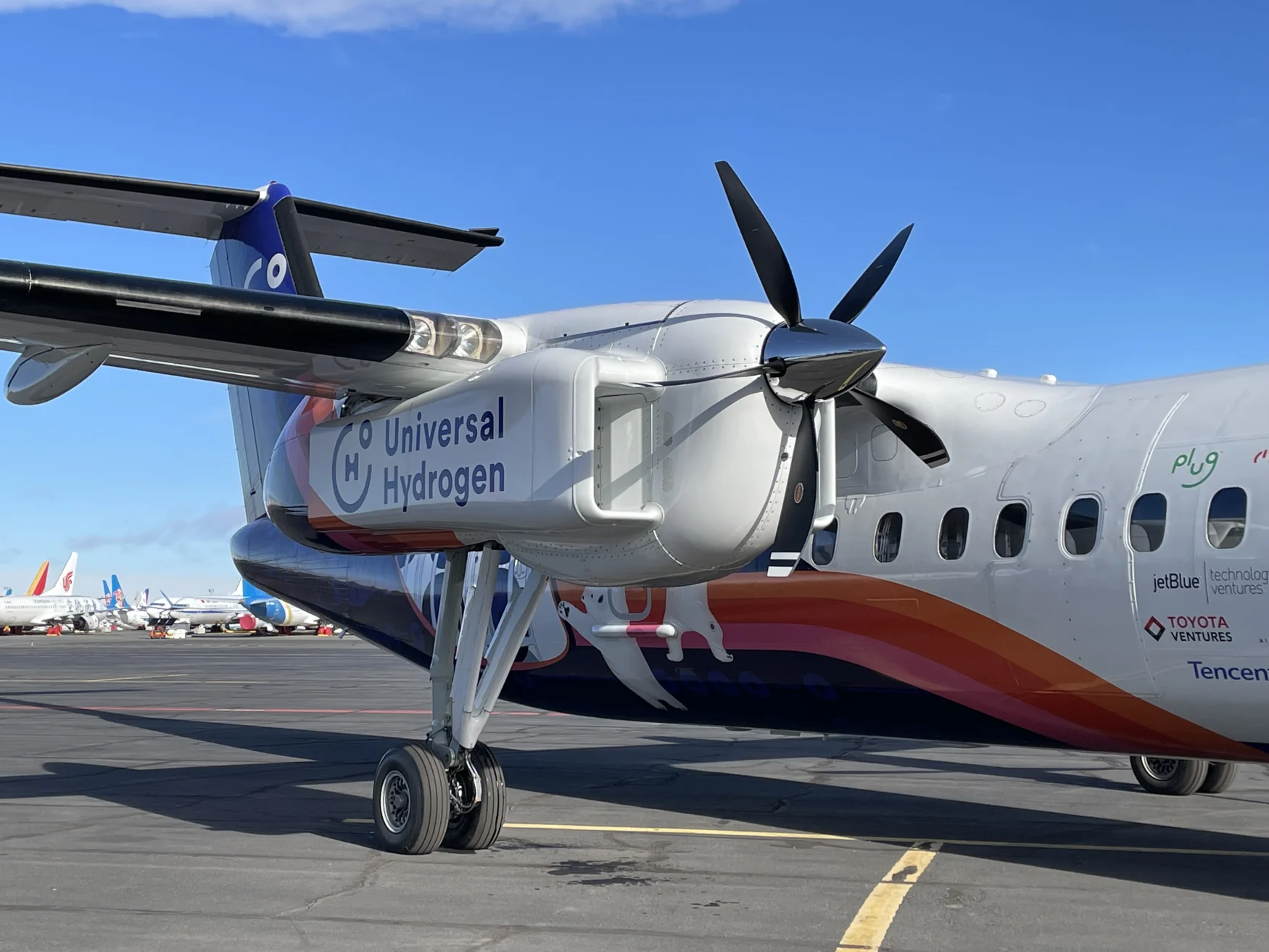A Dash-8 commuter plane flew for 15 minutes with a hydrogen fuel-cell engine | Engadget

Hydrogen holds promise for zero-emissions aviation, via either fuel-cell electric motors or jet engines that burn H2 directly. Now, Universal Hydrogen has announced that it completed a 15-minute test flight in a 40-seat Dash-8 commuter plane using a fuel-cell hydrogen engine. The company called the flight “historic” and said it is “committed to being North America’s first zero-emission airline.”
With a fuel cell from Plug Power and electric motor built by magniX, the power plant is the largest ever to take to the sky. However, it was only installed on the left side of the aircraft, while a standard Pratt & Whitney turboprop engine was fitted to the right wing for “safety of flight,” the company said. It supplied the engines with emissions-free “green” hydrogen (made via electrolysis from renewable power sources), connected via its own modules that keep the highly volatile gas in liquid form for up to 100 hours.

Universal Hydrogen
The Dash-8 was highly modified to accommodate the engine, 30kg (66 pounds) of liquid hydrogen and two racks of electronics and sensors. While the turbine engine was mainly used for takeoff, pilots were able to cruise mostly on hydrogen power during the second circuit. The flight attained a height of 3,500 feet.
Though it had some yaw due to the imbalance in power, “the airplane handled beautifully, and the noise and vibrations from the fuel cell powertrain are significantly lower than from the conventional turbine engine,” said chief pilot (and former US Air Force test pilot) Alex Kroll. The company received FAA approval for the flight just weeks ago.
The British/American firm ZeroAvia flew with a similar configuration on its twin-engine, 19-seat Dornier 228 plane earlier this year. Airbus recently announced that it’s building a fuel cell that could power a 100-seat aircraft around 1,150 miles, and Rolls-Royce recently completed tests of a jet engine converted to run directly on hydrogen fuel.
Potential problems still abound, though. Hydrogen has about a quarter the energy density of regular jet A fuel, so it’s only good for short hops. And as I’ve detailed in an explainer, there’s very little hydrogen fuel infrastructure, it’s tricky to work with and extremely explosive. Still, Universal Hydrogen is confident it can beat the odds. “Our business model resolves the chicken-and-egg problem between hydrogen airplanes and hydrogen infrastructure by developing both in parallel and with a uniquely low-cost approach,” said CEO and co-founder Paul Eremenko.
All products recommended by Engadget are selected by our editorial team, independent of our parent company. Some of our stories include affiliate links. If you buy something through one of these links, we may earn an affiliate commission. All prices are correct at the time of publishing.
[ad_2]Share this news on your Fb,Twitter and Whatsapp
Times News Network:Latest News Headlines
Times News Network||Health||New York||USA News||Technology||World News